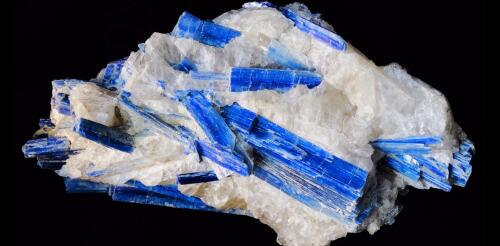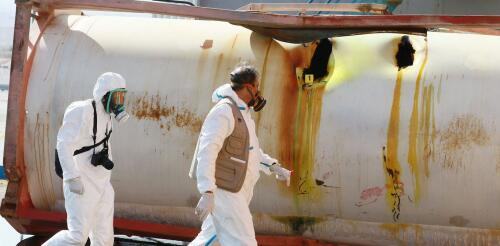Chemistry
Rechargeable batteries are great for storing energy and powering electronics from smartphones to electric vehicles. In cold environments, however, they can be more difficult to charge and may even catch on fire. I’m a mechanical engineering professor who’s been interested in batteries since college. I now lead a battery research group at Drexel University. In just this past decade, I have watched the price of lithium-ion batteries drop as the production market has grown much larger. Future projections predict the market could reach thousands of GWh per year by 2030, a significant increase. But, lithium-ion batteries aren’t perfect – this rise comes with risks, such as their tendency to slow down during cold weather and even catch on fire. Behind the Li-ion battery The electrochemical energy storage within batteries works by storing electricity in the form of ions. Ions are atoms that have a nonzero charge because they have either too many or not eno...
In a newly published study, we describe our design for a self-extinguishing rechargeable battery. It replaces the most commonly used electrolyte, which is highly combustible – a medium composed of a lithium salt and an organic solvent – with materials found in a commercial fire extinguisher. An electrolyte allows lithium ions that carry an electric charge to move across a separator between the positive and negative terminals of a lithium-ion battery. By modifying affordable commercial coolants to function as battery electrolytes, we were able to produce a battery that puts out its own fire. Our electrolyte worked well across a wide temperature range, from about minus 100 to 175 degrees Fahrenheit (minus 75 to 80 degrees Celsius). Batteries that we produced in the lab with this electrolyte transferred heat away from the battery very well, and extinguished internal fires effectively. We subjected these batteries to the nail penetration test, a common method for ass...
Curious Kids is a series for children of all ages. If you have a question you’d like an expert to answer, send it to curiouskidsus@theconversation.com. How do crystals form? – Alyssa Marie, age 5, New Mexico Scientifically speaking, the term “crystal” refers to any solid that has an ordered chemical structure. This means that its parts are arranged in a precisely ordered pattern, like bricks in a wall. The “bricks” can be cubes or more complex shapes. I’m an Earth scientist and a teacher, so I spend a lot of time thinking about minerals. These are solid substances that are found naturally in the ground and can’t be broken down further into different materials other than their constituent atoms. Rocks are mixtures of different minerals. All minerals are crystals, but not all crystals are minerals. Most rock shops sell mineral crystals that occ...
Many people encounter chlorine in their daily lives, whether it’s as an ingredient in household bleach or an additive that sanitizes water in swimming pools. Chlorine is also used as an antiseptic, a bleaching agent in the production of paper and cloth, and to kill microorganisms in drinking water. But this familiar chemical is also extremely toxic. And because it’s ubiquitous in many industries across the U.S., it often is released in chemical accidents and spills. As a pharmaceutical scientist, I study ways in which chemicals and other materials affect the human body. Currently, I am working to develop therapies to counteract chlorine gas exposure and to understand the mechanism by which chlorine harms people. One promising therapy that we are developing is inhalable nanoparticles that counteract lung damage following chlorine gas exposure. A common and dangerous chemical Chlorine is an extremely toxic and widely used chemical. In the U.S., it is one of the top...
Hundreds of millions of tons of single-use plastic ends up in landfills every year, and even the small percentage of plastic that gets recycled can’t last forever. But our group of materials scientists has developed a new method for creating and deconstructing polymers that could lead to more easily recycled plastics – ones that don’t require you to carefully sort out all your recycling on trash day. In the century since their conception, people have come to understand the enormous impacts – beneficial as well as detrimental – plastics have on human lives and the environment. As a group of polymer scientists dedicated to inventing sustainable solutions for real-world problems, we set out to tackle this issue by rethinking the way polymers are designed and making plastics with recyclability built right in. Why use plastics, anyway? Everyday items including milk jugs, grocery bags, takeout containers and even ropes are made from a class of polymers...




